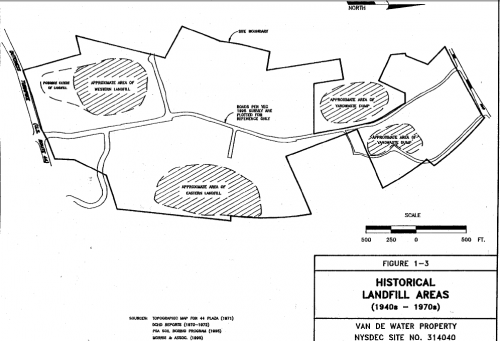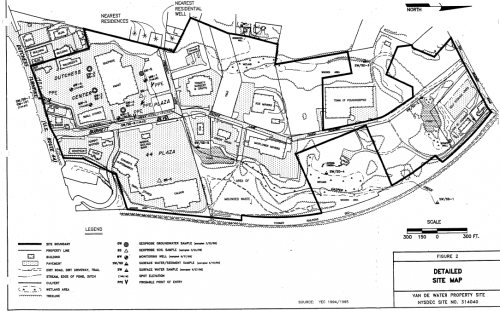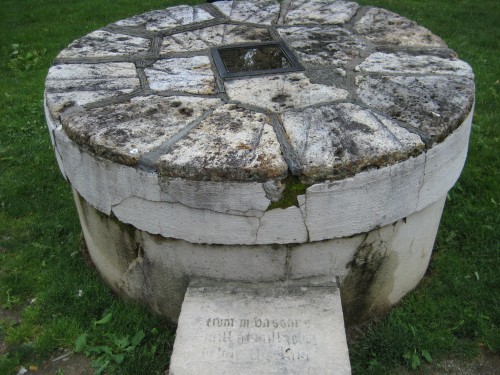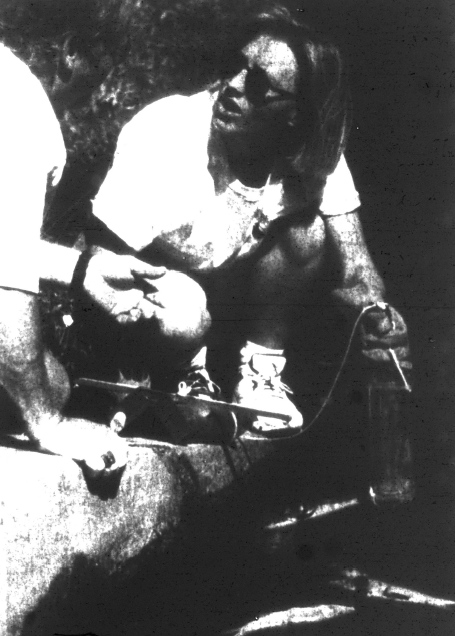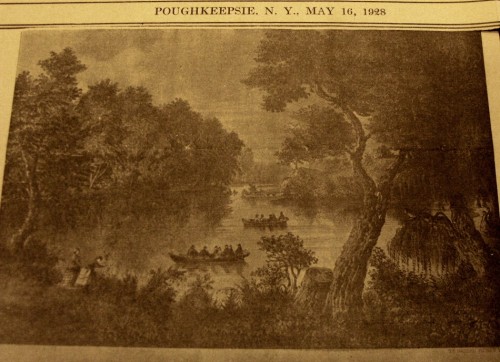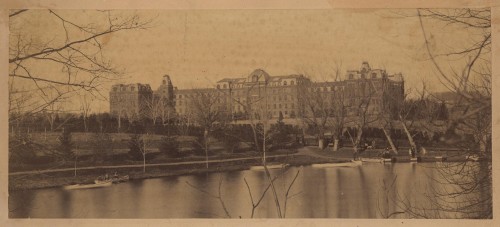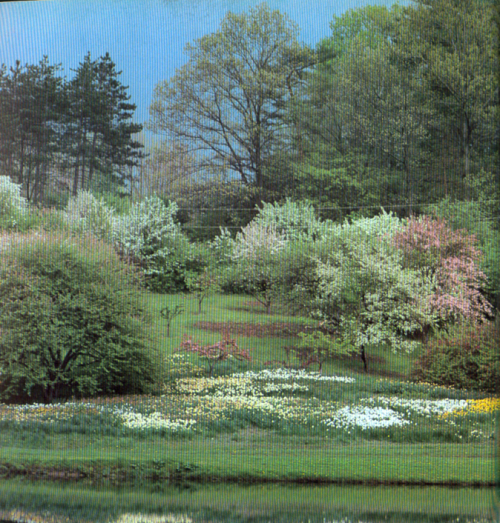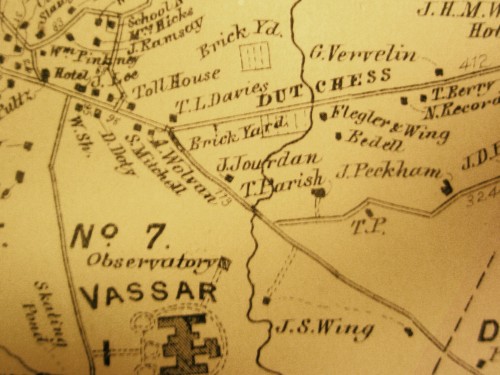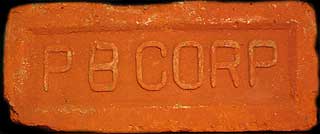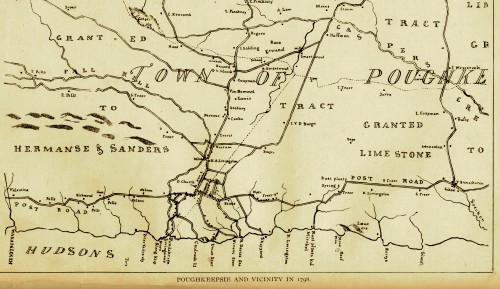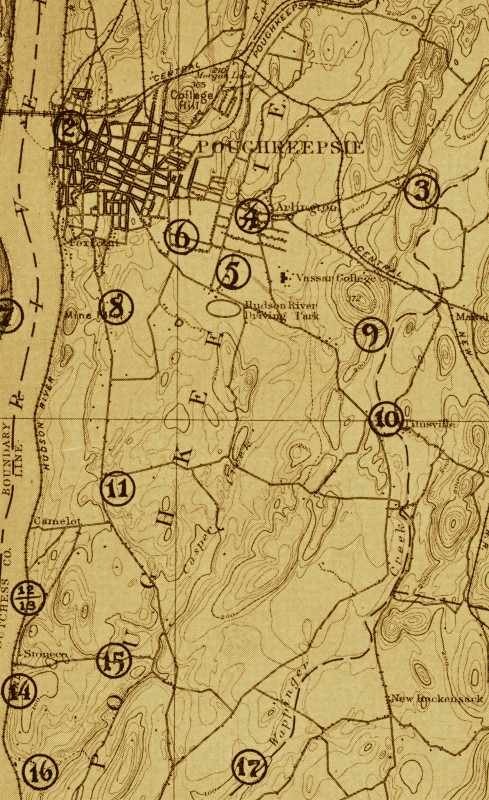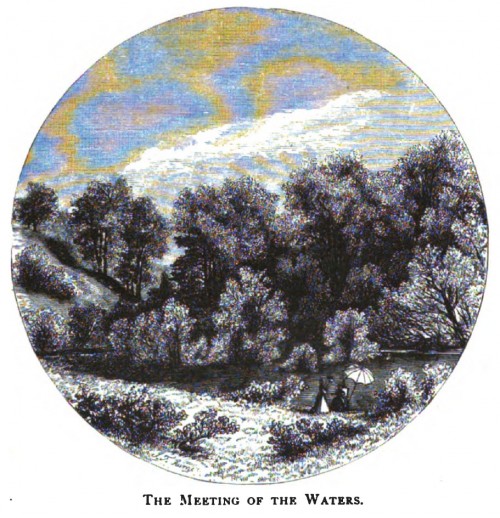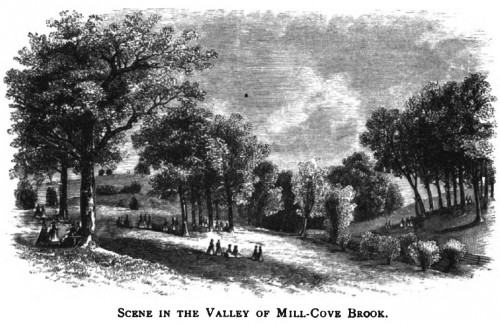
Orange ooze at the mouth of a culvert that channels water through the old Burnett Boulevard landfill underneath the Route 44 and Dutchess Center Plazas.
Background information:
Our interview with Alison Keimowitz, a Chemistry Professor at Vassar College, about the orange ooze actually started with her asking us a question: “What is in a landfill?”
Nadine and I started listing off things like pesticides, chemicals, cans, shopping carts, (pretty much anything disgusting that we could think of). Of course, all of those things are in a landfill, but Alison wanted us to think about the big picture. “The thing that’s special about a landfill,” she told us, “is that it has really high organic matter content…it has things that were once living, things that are mostly made out of carbon: paper, food waste, wood, and plant materials like yard clippings.”
And what happens to all of this organic matter in a landfill? Well, just as bacteria decompose it on the surface to get energy (think about a compost pile or an animal rotting in the woods), bacteria also decompose these things underground. The major difference, though, is that when bacteria decompose the food, newspaper, and so on underground in a landfill, they quickly run out of oxygen.
According to Alison: “Every organism that consumes organic matter needs two things: it needs the nutrients that actually physically go into the organism’s body; and it needs things so that it can get energy from chemical reactions. This is true with people too. People take in physical matter to make their bodies, in the form of food; and we take in oxygen. And the reaction—there are a lot of complicated steps, but you can think about it as one reaction—with food and oxygen gives your body energy (this is cellular respiration). Bacteria do the exact same thing. Except unlike people, they are much more flexible… They don’t say, ‘oh well there’s no oxygen so I can’t do anything else.’”
Even without oxygen, bacteria can still live by using inorganic molecules (nitrate, nitrite, manganese, iron and sulfur) to get energy from all the yummy organic matter surrounding them in a landfill.
What does all of this have to do with orange ooze?
In the Route 44 Plaza landfill, the bacteria are using iron (rather than oxygen) to get energy. Basically, they are converting the iron that naturally occurs in dirt—that is, iron (III)…iron with a positive 3 charge—into iron (II). Iron (II) is a little more soluble than iron (III) in water, so it dissolves into the Casperkill as it flows underground. When the water comes out of the culvert it is exposed to oxygen again. As soon as iron (II) is exposed to oxygen, it turns back into iron (III). Iron (III), again, is not very soluble, so it precipitates out of the water. The orange ooze is orange because it is really just rust dropping out of the water. According to Alison: “Rust… that’s what the orange ooze is. It’s basically particles of iron (III) oxides—it’s iron (III) bound to oxygen, mixed with all of the bacteria that are also getting energy by facilitating that reaction.”
What are the effects of this … is it dangerous?
One thing to worry about with iron (III) oxides is that they are really good at absorbing any other metal that comes their way. When there are harmful things like heavy metals or arsenic in the water, it is possible for them to be captured by the iron (III) ooze. That said, researchers from the Casperkill Assessment Project have done many tests on this ooze, and they haven’t found anything. Alison told us that, in all practicality, it’s quite unusual to see traces of other metals in this kind of ooze. “The iron oxides themselves don’t present any hazards; they’re fine. They’re unsightly, but they aren’t dangerous.”
Unfortunately, the unsightly iron oxide is actually one of the less disgusting things that results from bacteria breaking down food to get energy in a landfill. In anoxic conditions bacteria also may convert sulfate into sulfide, which has a putrid rotten eggs smell; and organic matter into methane, which can build up and explode if it isn’t released in pipes.
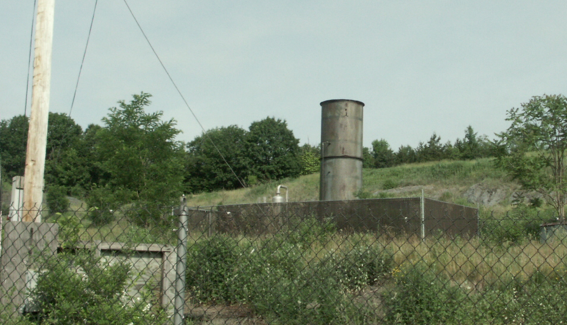
A pipe to release methane at the FICA landfill off of Van Wagner Rd.
Just for kicks, at the end of our interview I asked Alison how long these conditions would persist in the Casperkill: “Um…eventually they’ll go away. But we’re talking more like geologic time-scales. 10,000, maybe 20,000, years and they should be gone…maybe 30.”
Alison went on to tell us that the best way to get rid of these conditions is to try to eliminate the amount of organic waste that goes into landfills in the first place. “What composting does is it takes all of this organic material and doesn’t put it in a landfill. It puts it in open piles where it stays mixed with oxygen and its break-down happens much faster and in a way that doesn’t generate all of this stuff, much of which is kind of nasty.” In addition to just reducing landfill volume, you can also get free compost at the end!
Special thanks to Alison Keimowitz
Photo credits:
The Casperkill Assessment Document: Vassar College Environmental Research Institute, 2009. Health of the Casperkill, Dutchess County, New York.
“FICA landfill,” Nadine Souto, 2010
Posted in Casperkill | Tagged Brickyard Hill, Casperkill, Dutchess Center Plaza, Landfill, Route 44 Plaza | 1 Comment »
